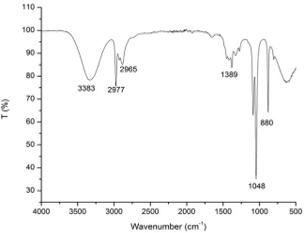Abstract
Cassia alata is used traditionally to cure various diseases like ulcers, stomach pain and fever. The potential of antidermatophytic, free radical scavenging and cytotoxic activity of ethanol leaves extracts of C. alata was studied. The preliminary phytochemical screening assay elucidates that presence of carbohydrates, tannin, phenol, saponin, flavonoid, steroid, terpenoids, glycosides, and alkaloids. Further phytochemical extraction was done by GC-MS, HPLC and FTIR. GC-MS analysis confirms that the presence of two major compounds namely Hexadecanoic acid and Oleic acid with four minor compounds. HPLC techniques revealed that the presence of two major com- pounds observed in two different retention time. FTIR spectrum revealed that the presence of carboxylic groups, alkanes, aldehydes and aliphatic amines in the ethanol extract of C. alata leaves. Cytotoxic effect of ethanol extract was assayed at different concentrations like 10, 25, 50 and 100 μg/ml against human epithelial carcinoma (A431). At100 μg/ml of ethanol concentration, 93.26±5.44 (%) and 82.45±2.44 (%) percentage of cancer cells were inhibited by ethanol extract and standard drug, respectively. Microscopic images of cancer cells treated with ethanol extract confirm the morphological changes and shrinkages of cells leads to cell death. These results were suggesting that Cassia alata exhibit high potential antioxidant, antidermatophytic and cytotoxic activity and also it could serve as alternative new resources for manufacturing new drugs against newly evaluating diseases.
Full text article
Authors

This work is licensed under a Creative Commons Attribution-NonCommercial-NoDerivatives 4.0 International License.

